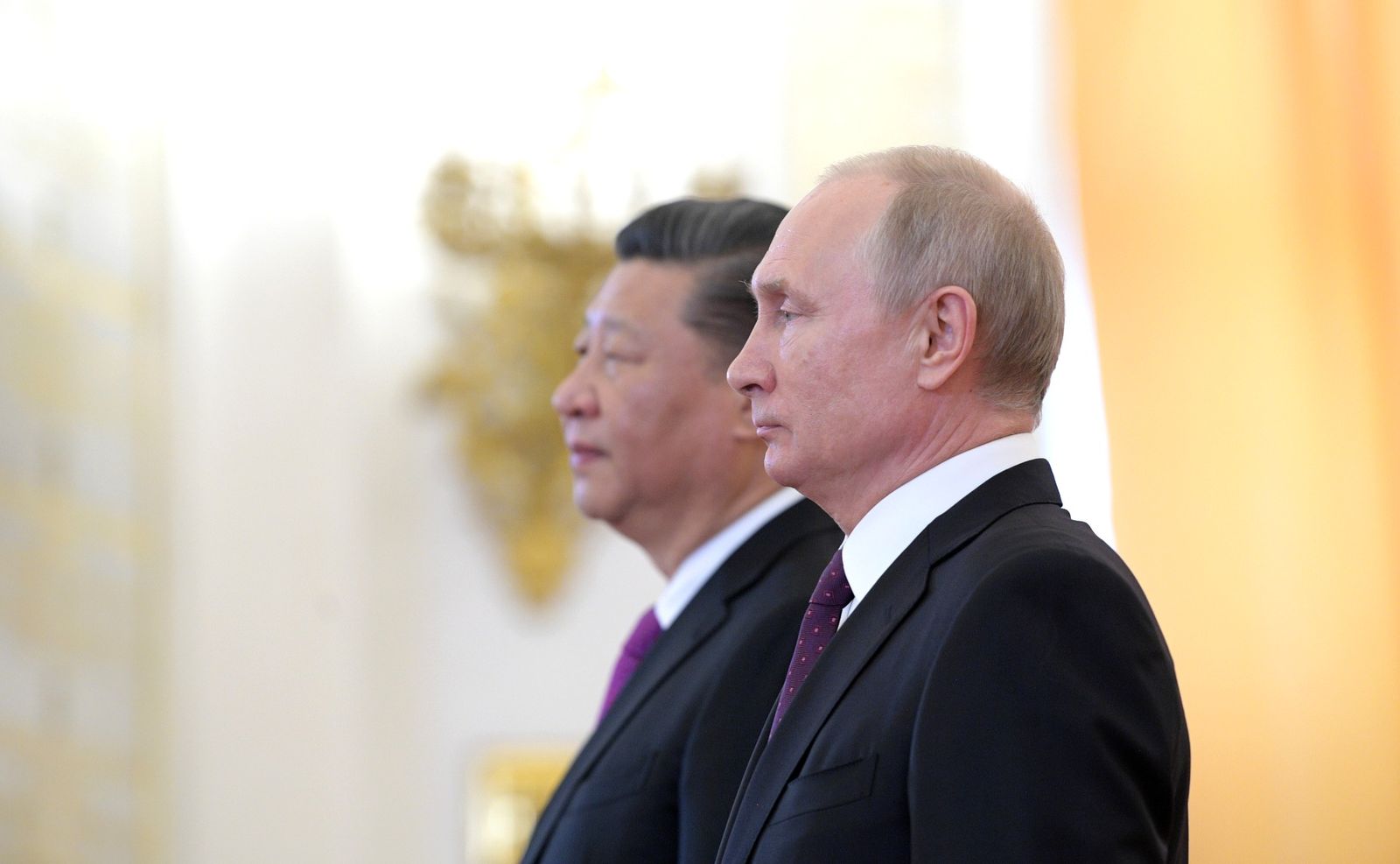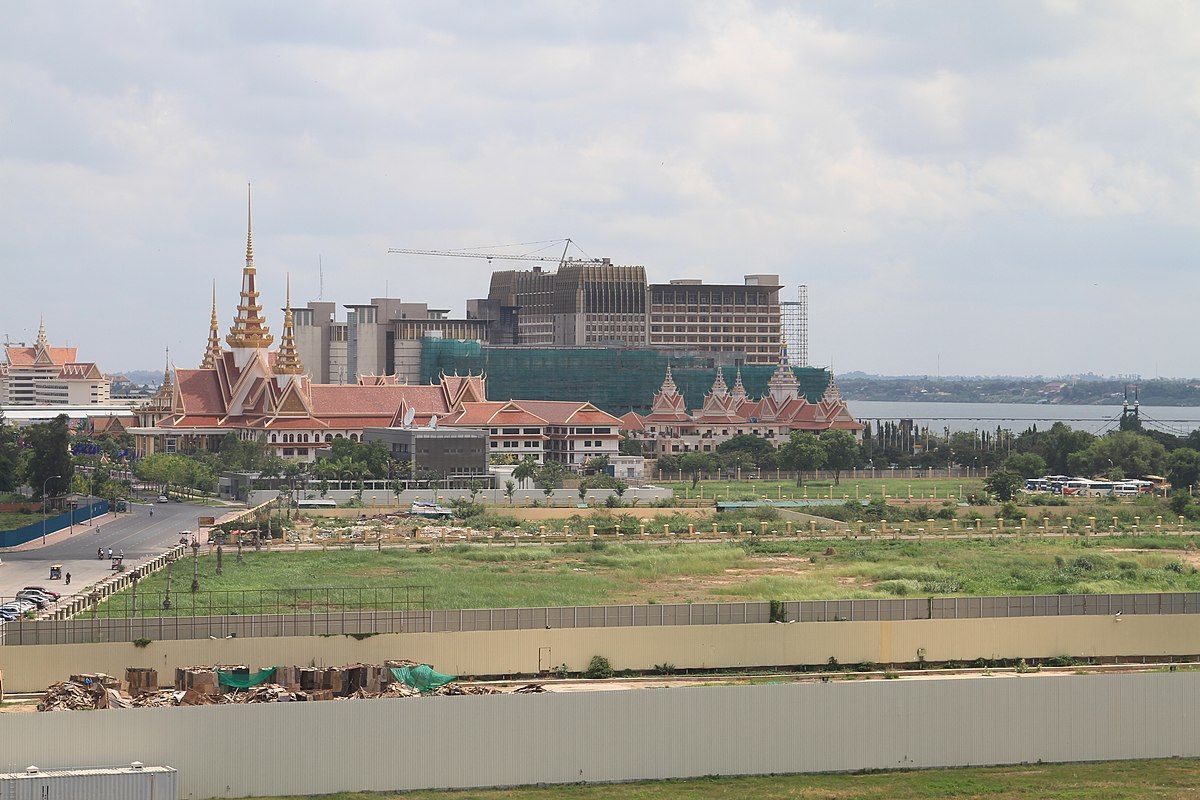Why has a remote, frozen island seen rising interest and involvement from foreign powers in recent years? The answer most certainly is not the weather or the snow. Located in the Arctic Circle, Greenland, along with the rest of the “High North,” is strategically positioned on the shortest routes connecting Asia, Europe, and North America. While 80 percent of Greenland remains covered year-round by an ice cap two miles thick, the effects of global warming have thawed Arctic glaciers, thereby increasing the island’s habitable surface area and unlocking new natural resources such as oil and minerals. While Greenland remains closely linked to Scandinavia as an autonomous region of Denmark, global powers such as the United States, China, and Russia are racing to extend military and economic influence in the region as it becomes more habitable.
Controlling Greenland offers military, economic, and political advantages for these three superpowers looking to monitor their global opponents. Between military outposts, technological developments, and mining infrastructure, the possibility of securing the optimal geographic foothold transformed Greenland from a barren land of ice into a geopolitical hotspot. Understanding the historical and present Arctic interests of the United States, China, and Russia will shed light upon in which direction the territory will move in the coming decades.
Historic Importance
Although the past few years have accelerated investment and interest in Greenland, the region has been catching the eye of superpowers since World War II. When Germany occupied Denmark, the United States supported its Western ally by increasing activity in Greenland to make sure it did not fall under German control. In 1941, US forces established a firm military presence in Greenland to support its European allies against German naval and meteorological activity. The United States saw Greenland as valuable because it offered natural resources and geographic proximity to US enemies across the Atlantic, as well as meteorological data about the weather over Western Europe. Initially, the United States mainly invested in cryolite mining infrastructure, thus securing a supply of minerals critical to the production of aluminum (and, consequently, US aircraft). As the German occupation of Denmark left Greenland vulnerable, Denmark made Greenland a protectorate of the United States in 1941, authorizing a greater US presence on the island. US naval forces integrated into the Coast Guard-run “Greenland Patrol,” an Arctic fleet designated to establish US airbases and military facilities. The “Greenland Patrol” ultimately controlled over 50 vessels.
Following World War II, US forces returned to Greenland to establish a secret polar base known as Camp Century. The base housed nearly 200 residents and was located far north of the Arctic Circle. US government officials described it as a “remote research community,” but in reality, the United States decided to station nuclear weapons capable of reaching the Soviet Union during the Cold War. As part of the covert “Project Iceworm,” the United States housed missiles under the ice and snow and hid them from Moscow. Engineers quickly realized, however, that storing nuclear weapons under shifting ice sheets was risky. After construction was completed in October of 1960, the project only operated until 1966, and the base was buried under ice.
Climate Change Increases Viability of Arctic Settlement
Since the end of the Cold War, rising temperatures and melting ice sheets throughout the Arctic have allowed countries to stake claims in the increasingly habitable areas in and around Greenland. Climate change opened access to untapped oil and natural gas reserves and new shipping routes among Asia, Europe, and the United States. Since the Arctic contains 13 percent of the world’s undiscovered oil and 30 percent of its undiscovered natural gas, controlling Greenland facilitates access to these natural resources. By capitalizing on the rising availability of land due to global warming, countries can utilize Greenland even more effectively as a reconnaissance outpost and supplier of natural resources than during World War II and the Cold War.
Human activities in Greenland have environmental consequences such as the erosion of critical infrastructure and the release of chemicals and waste like diesel fuel and radioactive material into the atmosphere and surrounding waters. For instance, the re-emergence of Project Iceworm’s nuclear-based infrastructure due to thawing ice releases toxic waste such as polychlorinated biphenyl (PCB) into the atmosphere, causing both environmental and diplomatic issues for the responsibility of the cleanup. This foreign involvement in Greenland is further complicated by the interests of local Greenlanders; for example, in February 2024, Greenland’s parliamentary policy strategy expressed a desire to limit foreign ownership of domestic infrastructure.
Global Interests in Greenland
In 2019, President Trump tried to purchase Greenland, a proposal that left Denmark’s leadership “bewildered.” The unprecedented attempt to purchase the island reflected a shift in US policymakers’ priorities toward extending a greater influence over the region. While the United States cares about the availability of new resources due to thawing ice sheets, the country is more concerned about limiting the influence of rival powers such as China. From 2012 to 2017, China invested US$450 billion across eight Arctic nations to establish the Northern Sea Route, a shorter shipping route to Europe with an accompanying submarine internet link. The Northern Sea Route’s internet cables support future techno-based growth in the Arctic and allow China to boost defense capabilities by monitoring cyberspace around the region. In addition to technological developments, China attempted to establish a hold over Greenland’s iron and uranium mining industries. The Chinese government declared its intent in 2018 to create a “Polar Silk Road” in order to link Europe with Asia and facilitate transportation channels.
The “Polar Silk Road” also threatens the United States because it involves another rival power: Russia. This formal Sino-Russian partnership, established in 2017, is one of multiple Russian advances in the past decade. In addition to reopening 50 ex-Soviet military posts in the Arctic, Russia has invested heavily in rebuilding 475 Cold War-era military strongholds since 2014. These bases are equipped with long-range fighter jets and anti-ship and anti-missile batteries. Over the past six years, Russia increased its number of Arctic military drills, seemingly hoping to deter any conflict in the region. In August of 2020, Russia conducted war games in the Bering Sea off the coast of Alaska, further alarming US forces.
The War on Ukraine
For US policymakers, Russia’s invasion of Ukraine marked an escalation in the country’s willingness to violate international norms and seize control of its sovereign interests. Furthermore, Russian government officials threatened Scandinavian nations, including Norway, for sanctioning the transportation of Russian goods through the Arctic. Russia’s aggression shifted the strategic calculus in favor of boosting the military capacity surrounding Greenland. The United States responded by publishing the Arctic Strategy Report in 2024, in which the Department of Defense vowed to increase communications, surveillance, reconnaissance, and training partnerships throughout the region, including Greenland. On a more tangible front, the United States is increasing the capacity of the Pituffik Space Base (formerly known as the Thule Space Force Base) on Greenland’s northwestern coast as a ballistic missile warning station and meteorological radar site.
The United States is not the only entity fortifying its defenses of the island. Russian aggression pushed Greenland’s Scandinavian neighbors Finland and Sweden to join the alliance, rendering Russia the only member of the Arctic Council not in NATO. Greenland itself is also moving toward the West. In early 2024, the government of Greenland, the Naalakkersuisut, unveiled the Arctic North American Forum, a partnership with fellow indigenous assemblies in Alaska and Nunavut, Nunavik, the Northwest Territories, and Yukon in Canada. This partnership is a reaction to Russia’s invasion of Ukraine, as Greenland’s government worries about the possibility of an arms race in the Arctic. The Naalakkersuisut is taking extra precautions by aligning itself with Western and pan-Arctic institutions such as NATO and the European Union.
Looking Ahead: Greenland as a Geopolitical Hotspot
Greenland may feel cold and distant, but the country is now an Arctic hub, rich with military, economic, and political incentives. During World War II and the Cold War, the United States built military bases and established greater diplomatic ties with Greenland to ward off Germany and the Soviet Union. Now, the acceleration of global warming presents a unique opportunity to capitalize on a geographical region linking the East and West. By capitalizing on the increased mobility and habitability afforded by melting ice sheets in recent decades, the United States, China, and Russia have increased their involvement in Greenland. From the Northern Sea Route to missile detection bases to rebuilding Cold War-era strongholds, countries redoubled efforts to strengthen political and commercial ties with the region. The invasion of Ukraine proves that global powers will go to war over vital regions, precariously positioning Greenland as the next prime hotspot for future conflict as rival countries quietly build up their influence across the island.





